Temple XIX was commissioned by the fourteenth ruler of Palenque, K’inich Ahkal Mo’ Nahb, and was dedicated on 9.15.2.7.16 9 Kib 19 Kayab (10th January 732AD). Prior to 1999, you would have been forgiven for overlooking Temple XIX as an obscure crumbled ruin that was lost to the jungle on the outskirts of the archaeological zone. But since then, excavations have revealed that Temple XIX was an integral part of the Cross Group which extended 150m south to form a much larger complex that included Temple XIX, Temple XX, Temple XXI and Temple XXII. The importance of Temple XIX has also been revealed by archaeologists, with a number of lengthy hieroglyphic texts and beautifully carved relief panels having been recovered and restored, which include: an alfarda tablet on the entrance stairway; a pillar immediately within the temple that features a carved stone wall and carved stucco fresco; and a large platform that is finely carved with a scene involving the king and his courtiers. The carvings and extensive texts that accompany them, make Temple XIX one of the highlights for visitors to Palenque and one of the most important temples in Mesoamerica for those who study Maya history and hieroglyphics.
The Alfarda Tablet of Temple XIX at Palenque
The story of Temple XIX begins on the stairway leading into it, which is flanked by a single alfarda tablet. These tablets are commonplace on the temples of the Cross Group and were engraved with hieroglyphic texts that describe each temple’s purpose and dedication. The solitary damaged alfarda tablet of Temple XIX is only one half of a pair that once flanked the stairs and provides only a fragment of the full dedicatory text. The text describes how the temple was dedicated by the Yajaw K’ahk (Lord of Fire) with a “house-entering” or “fire-entering” ritual in 9 Kib 19 Kayab. Although this date is incomplete, elsewhere in the Cross Group the same date is recorded with the full Long Count date of 9.15.2.7.16 9 Kib 19 Kayab (10th January 732AD). The “fire-entering” was a common ritual carried out to consecrate a new building and relates to the setting of the Hearth Stones at the centre of a home, which was believed to be the building’s spiritual heart. The ritual involved the burning of incense and royal blood in order to pleasure the god to whom the Temple was dedicated. The alfarda states that Temple XIX was dedicated as the Red House of the Hearth of God I (Palenque’s principle deity) and that the Yajaw K’ahk’ was an official named “yo-Ok-?-Tal” (where the ? represents a unreadable glyph).
The Sculpted Pier of Temple XIX at Palenque
Immediately inside Temple XIX is a large sculpted pier depicts K’inich Ahkal Mo’ Nahb being dressed by two attendants. The attendant on the left holds the lower beak of a bird costume that K’inich Ahkal Mo’ Nahb is being dressed in. The costume rises up around K’inich Ahkal Mo’ Nahb to give the impression that he is resting in the bird-monster’s jaws. You can see one of the bird’s long-lashed eyes above K’inich Ahkal Mo’ Nahb’s head (the other has eroded away). The serrated and elongated beak suggests the type of bird is either a cormorant or merganser. K’inich Ahkal Mo’ Nahb also wears a headdress that partly represents his name: merging the beak of a macaw, a radially feathered eye (that represents the sun) and an additional elongated snout with a protruding square nostril (that looks a bit like the snout of a crocodile). The additional snout is an emblem of the Sun God, K’inich Ajaw, and the wisp of smoke that flares from the nostril represents the god’s fiery spirit. The “ahk” (turtle) and “nahb” (lily) values are missing, but were probably represented on the eroded section.
The assistant who supports the costume is described as a “ch’ok“, meaning “emergent one”. This title was given to heirs to the throne who were considered to be emerging like blossoming flowers or ripening corn that would one day flower or ripen to become rulers. He is also described as K’inich Ahkal Mo’ Nahb’s uncle and the brother of his mother Ix Kinuw Mat. His stunted, nail-less, fingers and moustache (an unusual feature in Maya culture) suggest that this is the same figure who appears in an audience to the king on the Platform of Temple XIX, where he is named “muwaan-ni cha-nu-la a-ahn-?”.
The attendant on the right is named as yo-ko-?-tal and he is the same person that was recorded on the alfarda tablet at the entrance of Temple XIX. Again, he is listed here as the yakaw-k’ahk’, or Lord of Fire, and he is pictured with an incense bag hanging from his arm, which would have been used during the fire-rituals (it was believed that the gods could smell and incense was burnt to arouse and appease them). His title goes on to state he was also the ya-ja-K’un-Huun-na of K’inich Ahkal Mo’ Nahb and the King’s Holy Lord. The obscure yet commonly found ya-ja-K’un-Huun-na title has been translated as the “Keeper of Books” or “Guarder of things“, and probably relates to yo-ko-?-tal’s responsibilities as the chief priest charged with looking after Palenque’s sacred texts and religious teachings. The same title was found inscribed into the carvings of Las Sepulturas’ Structure 82 , a palatial residence located in the districts of Copan, demonstrating the high rank in society that came with this title. Yo-ko-?-tal’s repeated appearance in the texts and carvings of Temple XIX and his additional title as the “King’s Holy Lord” suggest he was entrusted to communicate with God I on K’inich Akhal Mo’ Nahb’s behalf.
A lengthy text once adorned the carved pier of Temple XIX, but of the 72 glyphs that graced the space, only 7 complete blocks and 9 partial block remain. The most important of these remaining glyphs is the central cluster that speaks of Tiwol Chan Mat, the father of K’inich Ahkal Mo’ Nahb. Tiwol Chan Mat is listed as a “ch’ok”, meaning “emergent one”, and is described as passing away whilst his brother was still on the throne and his own son, the future king Ahkal Mo’ Nahb, was still very young. The other fragmentary remains relate to the dedication of Temple XIX, the birth of K’inich Ahkal Mo’ Nahb, the accession of K’inich Kan Bahlam (Akhal Mo’ Nahb’s predecessor) and the accession of K’inich Ahkal Mo’ Nahb. It can be assumed that the full text was a statement that described K’inich Akhal Mo’ Nahb’s divine lineage and claim to the throne.
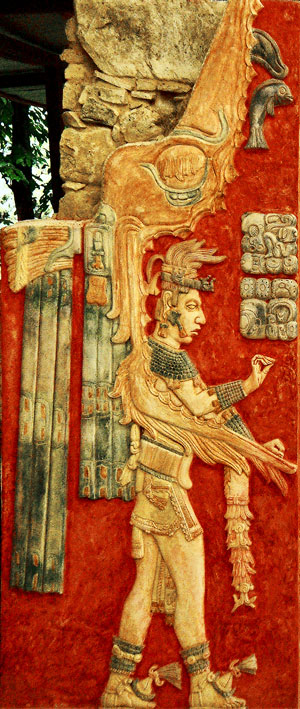 W0518: Templo XIX Pier ReliefStucco Panel of Temple XIX
W0518: Templo XIX Pier ReliefStucco Panel of Temple XIX
The most spectacular relief in Temple XIX is the polychrome carved mural of the young prince Upakal K’inich, whose name translates to “Sun God’s Shield” (fig. W0518). Arguably the most eye-catching of all the carvings on display at Palenque today, the stucco panel of Temple XIX shows the future king held in the jaws of a giant bird-monster costume that would have been supported by a back-rack and fastened around the midriff. Portrayals of Mayan rulers in the jaws of fantastical beings is very common (see the Zoomorphs of Quirigua and Lamanai Stela 9 for the best examples) and relates to the belief that rulers could transform themselves into beasts by harnessing their spiritual power, known as the way or wayob. The feathers around the lower jaw and the fish caught in the upper teeth clearly indicate that this is a fish eating bird, such as a heron or cormorant. There is a lengthy text of sixteen glyphs that accompanies the carving and names Upakal K’inich as the “baah ch’ok“, or heir to the throne (again the term ch’ok is used, which means “emergent one”). The text describes a ritual event that recurred every 2.5 years, or 8th Tun, and was overseen by Palenque God II (whose full name, “?-eyed-god”, is found directly in front of Upakal K’inich’s face in fig. W0518). This recurring event almost certainly relates to the scene on the panel, which in turn relates to the “Mat” bird and the Palenque triad gods, who were born in “Mat-wil”. The ritual is repeatedly found inscribed as an unknown glyph that features a heron with a darkened band across its eye in the texts of Palenque and each time it appears to have been the duty of an heir to the throne to perform. These events may have been the young prince’s equivalent to the autosacrificial blood-letting rituals that the kings and queens undertook for the k’atun and hotun period festivities. There is barely any mention of Upakal K’inich as ruling at Palenque – in fact he is only listed as being in office on the K’an Tok panel, which dates him as overseeing the appointment of a lord on 9.15.10.10.13 8 Ben 16 Kumk’u (742AD).
The Platform of Temple XIX
Further inside Temple XIX is a mysterious and highly decorated platform. The hieroglyphs around it discuss Palenque’s ancestral origins, K’inich Ahkal Mo’ Nahb’s recent ancestry, before discussing the contemporary events surrounding the completion of Temple XIX and the other events witnessed during K’inich Akhal Mo’ Nahb’s tenure. In total there are 15 passages of text, with 8 on the southern side and 7 on the west. The text accompanies three intricately carved panels that depict K’inich Ahkal Mo’ Nahb in audience with his courtiers.
The South Panel Text of Temple XIX
The story begins on the southern side of Temple XIX’s platform where a passage reads: “It is 12.10.1.13.2; it is 9Ik’, for nine gods Gods are Taken; it was twenty-two days ago that the second moon emerged and 1.16.17 ago that K’awil was stood up in the east, it is then that 5 Mol comes to pass and in the mirror-house God I is seated into office, overseen by First House Itzamnaaj”. This passage relates to the prehistorical seating of God I on the 10th March 3309BC with much of the passage designed to set the time and the portents that were present. K’awil, who is officially known as God II, represents Venus, and so the date is being set around the Venusian cycle.
The second passage of the Temple XIX platform continues to describe the events immediately preceding the Fourth Sun and begins with a Long Count date of 12.10.12.14.18 1 Etz’nab 6 Yaxk’in (17th March 3298BC). The passage continues to state: “Chopped is the head of the Starry-Deer-Crocodile and thrice flows his blood; it was he who fashioned it, God I”. This is probably telling the story of destruction that cleared away the wooden men at the end of the Third Sun to make way for the creation of modern man from maize at the beginning of the Fourth Sun.
The third passage of the Temple XIX Platform describes the rebirth of God I on 1.18.5.3.2 9 Ik’ 15 Keh (21st October 2360BC) and how he “touched the earth” in a place called Matwil – the sacred birth place of the Palenque ancestry. Passage four of the Temple XIX platform simply describes how God III was reborn just four days after God I (on 1.18.5.3.6 13 Kimi 19 Keb), while the fifth passage describes the birth of God II on 1.18.5.4.0. 1 Ajaw 13 Mak, a further fourteen days after God III. The passage goes on to tell us that all three God’s “touched the Earth at Matwil” at this time and that they were brothers born by Muwaan Mat (also known as the First Mother, Triad Progenitor, Lady Methuselah and Lady Beastie). Passage six of the Temple XIX platform closes the prehistorical account by recording the installation of Muwaan Mat into office as the Holy Lord of Matwil in 2.0.0.10.2 9 Ik’ Seating of Sak, 35 years after creating the last of the triad of gods.
With the roots of Palenque’s god’s set squarely at the beginning of time, the text on the southern side of the Temple XIX platform finishes by associating the present ruler, K’inich Ahkal Mo Nahb, with the divine ancestry of Muwaan Mat. This contemporary history begins by moving the story forward a period of 7.14.9.12.0 (to the 3rd January 722AD) to the accession of K’inich Ahkal Mo’ Nahb’ III. This distance of 1112280 days is exactly 4,278 cycles of the 260-day Ritual Calender, 1426 Mars cycles of 780 days (the cycle brings Mars and Earth to their closest points on their independent solar orbits), exactly 37665 lunar cycles (which the Maya measured as 29.5308642 days) and 93 cycles of 11960 days from the Dresden Codex.
The final passage on the Temple XIX south panel completes the opening series by describing the K’inich Ahkal Mo’ Nab’s first Period Ending ceremony in 9.14.13.0.0 6 Ajaw 8 Keh. The passage states: “On the date of thirteen stones it is his first-stone binding (that of K’inich Akhal Mo’ Nahb); he takes the crocodile throne in the Presence of God I, God II and God III at the spring of Lakamha” (which was probably the spring located close to Temple XIX).
In summary, the Temple XIX southern panel is designed to associate the accession of K’inich Akhal Mo Nahb to those of the gods. Like Muwaan Mat and GI, he is installed into office on 9 Ik’ and with the cycles of the Moon and Mars being exactly divisible into the number of days between the accession of Muwaan Mat and himself, it means these powerful portents are in exactly the same position. In other words, he has the same powers cosmic powers. The text then finishes with him re-enacting the events his ancestors carried out at the beginning of time in their presence and under their guidance.
The West Panel Text of Temple XIX
The text on the western side of the Temple XIX platform begins by recording: “It is the date of the seven stones; the platform of the Time Lord, Yax Itzam Aat, is complete; K’an Joy Chitam, Holy Lord of Baakal, casts incense upon it”. The date relates to 9.6.7.0.0 7 Ajaw 8 K’ayab (11th February 561AD) and the Stone or Time Lord, Yax Itzam Aat, is the great grandfather of K’inich Ahkal Mo’ Nahb and father of Ix Tz’ak Ajaw (Pakal the Great’s wife).
The text then moves back to the contemporary Period Ending at 9.15.0.0.0 4 Ajaw 13 Yax (20th August 731AD) and states: “It is the stone-seating of the fifteenth tun; it is the stone-binding of K’inich Ahkal Mo’ Nahb, the Holy Lord of Matwil; it is the first raising of God I, the duty of Salaj Bolon”. Here, in keeping with the mythological references of the Temple XIX Platform, K’inich Ahkal Mo’ Nahb is given the title K’uhul Matwil Ajaw, or Holy Lord of Matwil, which is an unusual reference to his mythological lineage rather than his dynastic lineage at Palenque (which was known as Baakal). A mysterious character named Salaj Bolon is recorded as being in attendance and it is likely he was a close relation to the ruler and responsible for the ritual.
The third passage on the western side of the Temple XIX platform moves forward another two years to 9.15.2.7.16 9 Kib 19 K’ayab (12th January 734AD) records the fire-entering ceremony performed to celebrate the “ripening” (completion) of Temple XIX. The “fire-entering” was a common consecration ritual that followed the setting of the hearth (known as the binding of the stones) at the centre of the home or building. The passage goes on to tell us that Temple XIX is one of “Eight Great Sun Emergence Houses” built to honour God I and that this house is the Red House of GI – quite probably a reference to Mars, the red planet.
The fourth passage on the western side of the Temple XIX platform describes a “rope-taking” ritual taking place 24 days after the “fire-entering” event, in 9.15.2.9.0 7 Ajaw 3 Wayeb (5th February 734AD). This probably relates to the carved scene on the west panel (fig W0519w) in which the middle character is named as Salaj Bolon and clearly holds a bundle of rope.
The fifth passage on the western side of Temple XIX’s platform moves on two years, to the date 9.15.4.15.17 6 Kaban 5 Yaxk’in (11th June, 736AD). Here, the text records fire entering the “red houses” of God II, whilst the Sun enters the “red-house” of God III. This suggest that the houses may not be buildings and are instead stations in the sky, or, the buildings were observatories that only allowed the light from designated celestial objects to enter on momentous occasions (such as the Sun on the summer Solstice). The sixth passage then moves forward just another forty-three days to 9.15.5.0.0 10 Ajaw 8 Ch’en and a period ending festival which once again involved the Platform of Temple XIX and an incense scattering ritual carried out by K’inich Ahkal Mo’ Nahb in the presence of God I.
The Southern Panel Carvings of Temple XIX – Left Scene
On the first panel on the southern side of the Temple XIX platform, the first person’s name is comprised of three glyphs located beneath the panel, close to the floor. The first two spell out the name Yohl Mat Ich Baak, “the heart of the Mat’ (the Mat was a sacred bird). The third glyph is his title and features an ugly bird-like head wearing a cloth hat- this remains undeciphered.
The middle person’s name is written directly behind Yohl Mat Ich Baak (see fig. W0519) and is also a series of three glyphs. The top glyph is immediately recognisable as the date Chan Ajaw (4 Ajaw), but in this instance appears to be the persons name. The second part of his name is represented by the middle glyph, part of which appears to feature a sprouting maize plant, but has yet to be deciphered. The third glyph is again the bird head glyph that represents an unknown title.
The third character’s name floats in the upside down “L” formation of glyphs directly in front of his face (see fig W0519). He has a more extensive name and is seen passing a headband to the king. His attire is principally the same as the other two, but with the addition of an elaborate headdress that features a large square eye and elongated beak that is associated with the Principle Bird Deity, Itzamna. The first three glyphs that accompany this person tell us that his name is Janab Ajaw and that he is the impersonator or representative of Yax-Naah-Itzamnaaj (Itzamna). As with the others, the last glyph describes his title and may be an alternative form of the ugly-bird glyph with the appendage of the lordly title “Ajaw” to confirm his seniority over the other two. This last character, Janab Ajaw, is also mentioned on the K’an Tok Panel, which records K’inich K’an Joy Chitam “fastening the headband” to him in 9.14.7.0.15 6 Men 13 K’ank’in (7th November 718AD). The K’an Tok Panel records Janab Pakal as the grandson of the infamous K’inich Janab Pakal, which would make him the cousin of K’inich Ahkal Mo’ Nahb. Midway up his right forearm dangles an incense bag, suggesting that he plays a priestly role. In his hands he offers a headband to the king who is leaning down to receive it (show to the left in fig. W0520 below).
The Southern Panel Carvings of Temple XIX – Right Scene
The next character in the series sits in the centre (on the left side of fig. W0520) and leans towards Janab Ajaw in preparation of receiving the headband. This is clearly the king sitting on a large stone throne and holding the serpent bar of kingship. He is named as K’inich Ahkal Mo’ Nahb, the impersonator or incarnation of God I. The kings headdress also asserts a link to God I by featuring a plumed bird that appears to sit on the kings head and wears the “Ajaw” medallion to demonstrate its regal status. The bird’s long neck extends above the kings face (just out of shot in W0520) and in its beak it holds a fish – a familiar sight in depictions of this divine bird (presumably a heron or cormorant). The accompanying text also describes K’inich Ahkal Mo’ Nahb as the Holy Lord of Baakal and the Kalomte, which is thought to have been the title given to a Regional Holy Lord. This section of the panel is a re-enactment of the passing of office from Itzamna to God I that is recorded as taking place on 9 Ik’ 5 Mol in the initial text of the South Panel, with Janab Ajaw becoming the spiritual embodiment of Itzamna and K’inich Ahkal Mo’ Naab the embodiment of God I. It therefore seems likely that the left hand scene on the south panel is an accurate portrait of K’inich Ahkal Mo’ Nahb’s receiving the crown on 3rd January 722AD.
To the right of the king is what appears to be a censer, or fire bucket, that stands on a tripod. From the top appears a devilish head with flames radiating from it and plumes of ribbons emanating from it. This is the portrayal of a fire ritual that has invoked the spirit of a god, who appears amidst the flames and smoke. It is no surprise then, that the person who kneels beyond it is the yajaw k’ahk’, or “Lord of Fire”, who is named Yo-Ko-?-Tal and also features on the alfarda tablet at the entrance to Temple XIX. The fire ritual required the burning of holy blood, which the king provided by piercing his genitals and dripping the blood on to paper to be burnt, so the plumes of ribbons may also represent the spurting blood. Unusually, Yo-Ko-?-Tal also clutches an unknown bar in his arms, perhaps reflecting the lofty status that came with the Lord of Fire title.
The second figure back from the king is named as Yayax-sa-ja-la Ma-k’a-ba-ja-te. Despite his name being entirely readable, the translation of his name is not clear. The opening phrase, yayax, probably means “very green” and “sajal” probably refers to an official or subordinate role – combined, these suggest that he is a junior lord or official. His name, ma-k’a-ba-ja-te, is very similar to a name found on Pakal’s sarcophagus lid that reads yuku ma-k’a-ba-te’ and strongly suggests the two are related in some way.
The last character on the south panels of the Temple XIX platform bears the name Muwaan Chanul Ahn, where the first two words translate to Hawk Guardian He appears to have some sort of deformity that has affected his hands – his fingers look bulbous and almost frog-like. The illness may be acromegaly, which is thought to have affected Pakal’s mother, Ix Sak K’uk’, and this may indicate a relationship between Muwaan Chanul Ahn and Sak K’uk, which would make him a distant cousin of the king.
In this right hand scene, the three nobles sit in the presence of the king, whereas on the right side they kneel. It could be that this is due to their status as confidants to the king, whereas those to the left come in reverance. However, it could be that the right hand scene is a completely different event, requiring different protocols, and of course it seems most likely that this event is the fire-entering ritual and dedication of Temple XIX on 9.15.2.7.16 9 Kib 19 Kayab (10th January 732AD).
The Western Panel Carvings of Temple XIX
On the west side of the platform in Temple XIX, three more figures sit who could be described as the rope bearers, for two wear rope around their neck and the middle character holds a large coil of rope in one arm, while an incense bag hangs from his other arm. This central character is well known from the passages written within Temple XIX and on the alfarda tablet at the entrance. His full name is listed here as Salaj Bolon Okib Aj Uxte’k’uh, but elsewhere he is referred to more simply as Salaj Bolon. In the texts of Temple XIX and Temple XXI, Salaj Bolon is recorded as present at a ceremony involving God I on the K’atun ending ritual of 9.15.0.0.0, he then played an obscure role in the Period Ending rituals of 9.15.5.0.0, before playing an important role in a “rope-taking” ritual during the festivities of 9.15.2.9.0 – which is undoubtedly the ceremony that is depicted in the carving. He is also described as overseeing two other religious ceremonies and the incense bag hanging from his arm suggests he was a priest (incense was burnt to communicate with the gods, who were thought to be embodied in the smoke). However, he may have been an heir to the throne, for the term “Okib”, meaning pedestal or platform, was given as a title to people who were in line to the throne, or rather, divinely elevated above society. The last part of his name, “Aj Uxte’k’uh”, means “He of Three Gods” and probably refers to his divine connection with the Palenque triad of Gods, although it could also be the name of a nearby town where Salaj Bolon was born. It is worth noting that he sits on a throne – which is very unusual for a non-ruler – so he may have been the ruler of a subordinate region.
The name of the figure to the left of Salaj Bolon is uncertain and the glyphs describe him as a junior lord who is connected in some way to water and the mysterious “heron with fish” motif that was used repeatedly in the names of the officials on the first carved panel, which presumably denotes a sect or clan of some kind. The figure to the right also bears an unrecognisable name and is listed as a junior lord and a bat lord.
Summary on the Importance of Temple XIX
Temple XIX was built as a temple to honour God I, but the texts that line its walls were designed to associate the king, K’inich Ahkal Mo’ Nahb, with the divine lineage of Matwil. This may have been born out of a necessity, as the direct ancestry of K’inich Akhal Mo’ Nahb had fallen to Calakmul and then Tonina – hardly a sign of divine omnipotence. From the inscriptions found on temple XVIII, it is thought that K’inich Akhal Mo’ Nahb was born on 9.12.6.5.8 3 Lamat 6 Sak and was the son of Tiwol Chan Mat, who was listed in Temple XVIII as a future king and therefore must be the third son of Janab Pakal (Pakal the Great). Tiwol Chan Mat died long before his elder brother K’inich K’an Joy Chitam II relinquished the throne and never became king. K’inich K’an Joy Chitam II was captured by Tonina and was probably held hostage within the enemy’s city for almost 20 years – leaving Palenque firmly, and embarrassingly, in the control of their greatest enemy. Quite how or why K’inich Akhal Mo’ Nahb came to power is a mystery, but regardless of whether or not he was really a descendent of the great K’inich Janab Pakal is by-the-by. The holy lineage of Baakal was disgraced – and even Pakal the Great may have been the product of an unwelcome relationship between his mother, Sak K’uk, and an overlord from Calakmul (who had seized the city from Sak K’uk’s mother, Lady Yohl Ik’nal, shortly before Pakal was born).
By forging a direct connection to Matwil and the lineage of the gods, K’inich Akhal Mo’ Nahb was looking to create a divine lineage that moved himself, and Palenque, beyond the recent past and right back to a time before the city of Palenque had been built. This would provide a complete fresh start and a direct connection with the most powerful gods of the Maya kingdoms.
References
1: The Maya Flood Myth and the Decapitation of the Cosmic Caiman – By Erik Velasquez Garcia
2: The Inscriptions from Temple XIX at Palenque – David Stuart ©2005 by The Pre-Columbian Art Research Institute – ISBN 0-934051-10-0

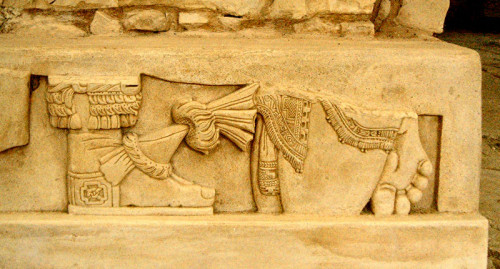
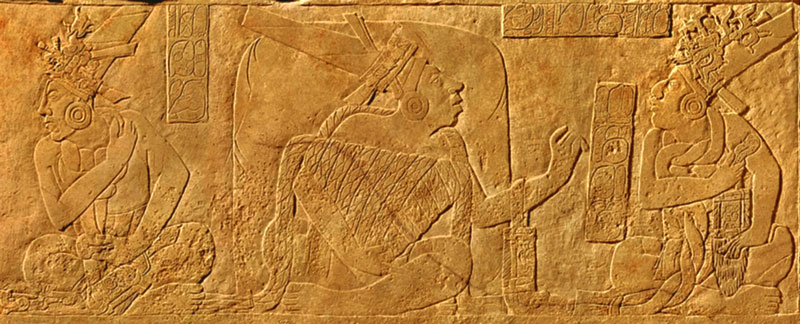
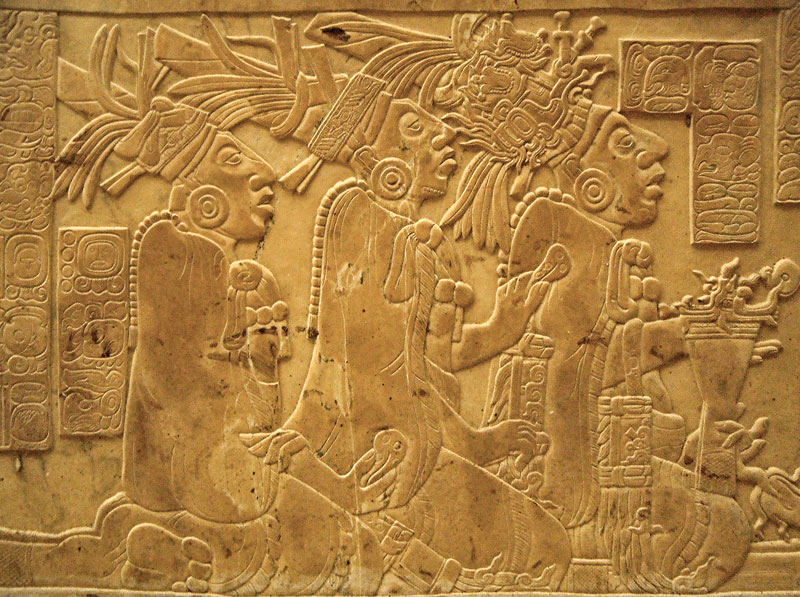
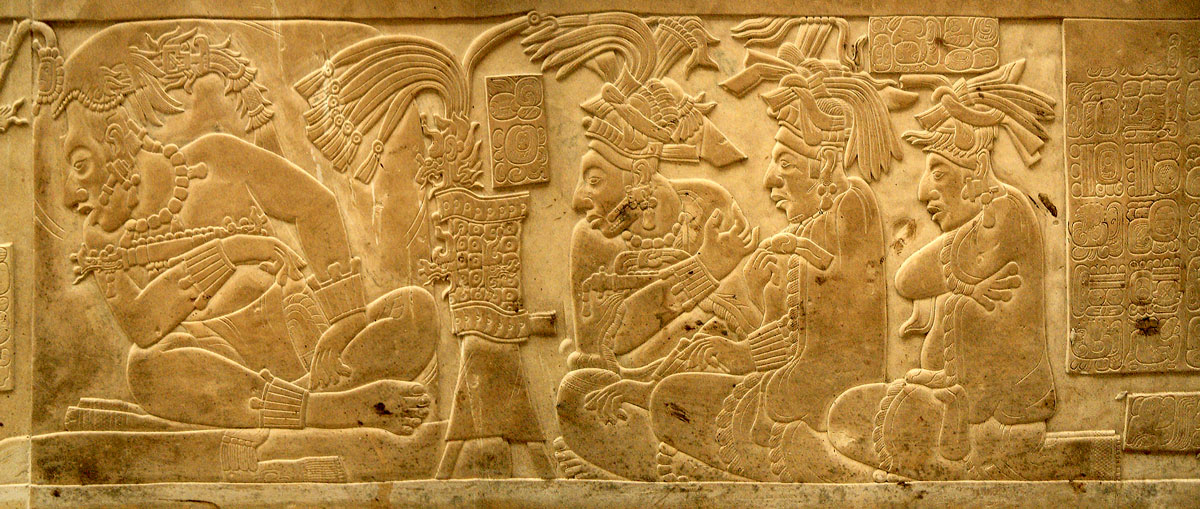
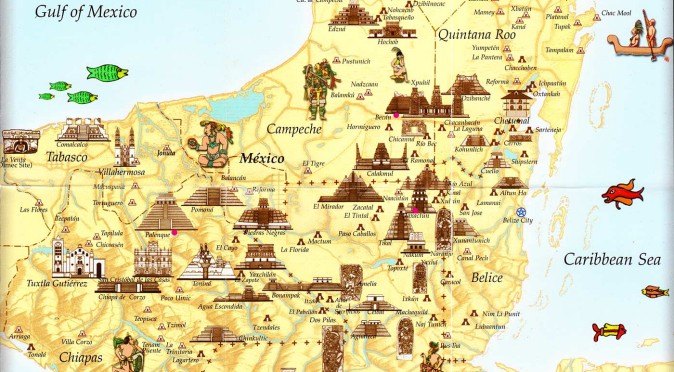
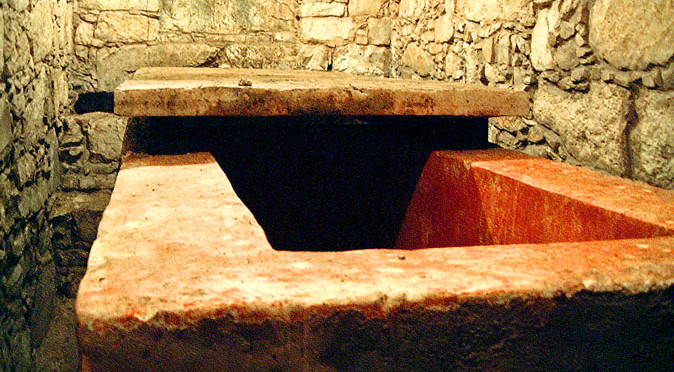
One thought on “Palenque: Temple XIX”